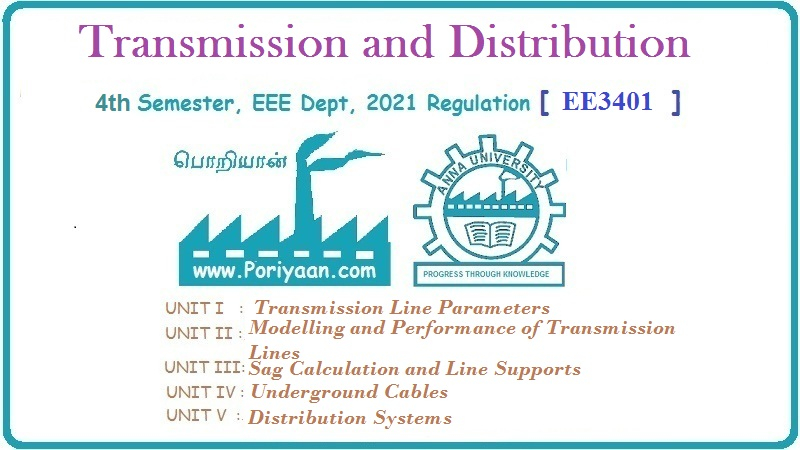Transmission and Distribution: Unit I: Transmission Line Parameters
Introduction
Transmission Line Parameters
The various energy sources which are used to generate an electrical energy on the large scale are steam obtained by burning coal, oil, natural gas, water stored in dams, diesel oil, nuclear power and other nonconventional energy sources.
Introduction
The energy is neither be created nor be
destroyed but it can be converted from one form to another. The generation of
an electrical energy is nothing but the conversion of various other forms of
energy into an electrical energy. The various energy sources which are used to
generate an electrical energy on the large scale are steam obtained by burning
coal, oil, natural gas, water stored in dams, diesel oil, nuclear power and
other nonconventional energy sources. The electrical power is generated in bulk
at the generating stations which are also called power stations. Depending upon
the source of energy used, these stations are called thermal power station,
hydroelectric power station, diesel power station, nuclear power station etc.
This generated electrical energy is
demanded by the consumers. Hence the generated electrical power is to be
supplied to the consumers. Generally the power stations are located too far
away from the town and cities where electrical energy is demanded. Hence there
exists a large network of conductors between the power stations and the
consumers. This network is broadly classified into two parts,
1. Transmission 2. Distribution.
Transmission and Distribution: Unit I: Transmission Line Parameters : Tag: : Transmission Line Parameters - Introduction
Related Topics
Related Subjects
Transmission and Distribution
EE3401 TD 4th Semester EEE Dept | 2021 Regulation | 4th Semester EEE Dept 2021 Regulation
